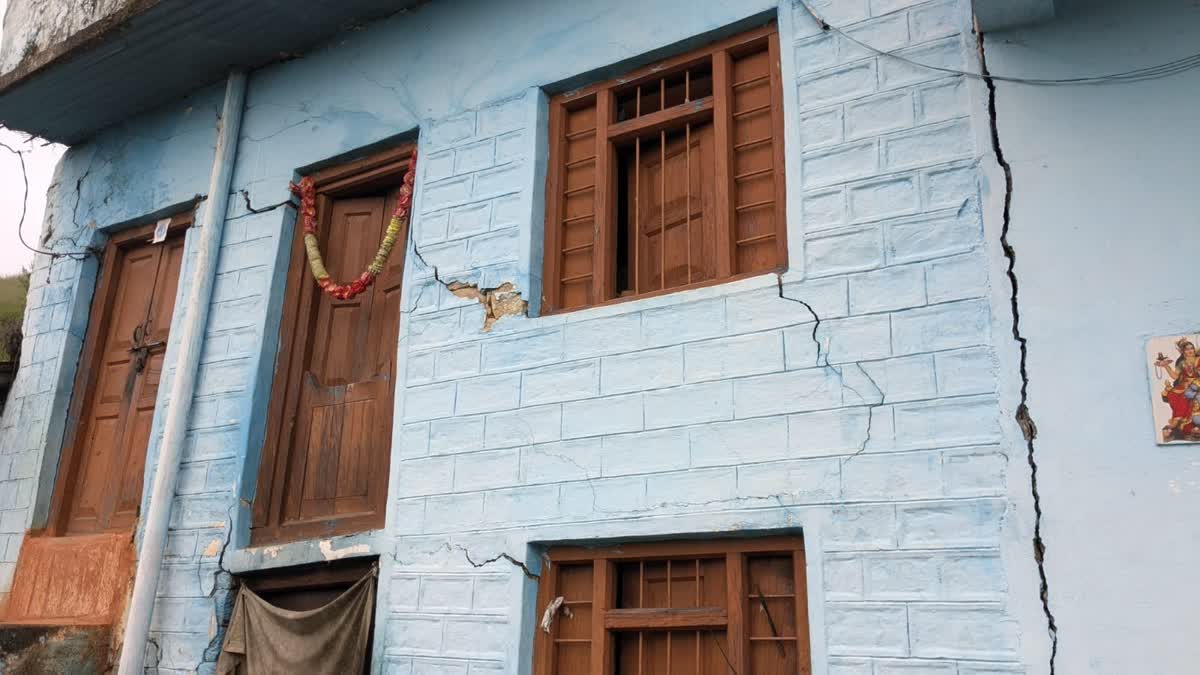Dehradun (Uttarakhand): Residents of several villages in Bageshwar and Uttarkashi districts of Uttarakhand continue to live in a state of fear as cracks similar to those in Joshimath (now Jyotimath) have appeared on the walls and ceilings of many houses.
At least 30 houses in Mastadi village of Uttarkashi and almost two dozen villages in Bageshwar were worst affected.
Locals attributed land subsidence following illegal mining and excavation in the area to this situation, while experts consider haphazard urbanisation and construction to be the major reasons for these conditions.
Curb Must On Haphazard Construction
Experts who spoke to ETV Bharat warned that if haphazard urbanisation and construction on mountains are not stopped, then it will not have serious consequences on the region’s ecology.
Prof. TN Singh, Director of IIT Patna, said every city, village, and river has a carrying and bearing capacity, and habitations on mountains are built on old slopes, whose biggest enemy is water.
“If there is no proper arrangement for water drainage, then it will be dangerous for the mountain. That is why there must be good arrangements for water drainage in the mountains,” he said.
Prof. Singh said that Jyotirmath also faced a lack of drainage for water, which led to the landslide.
According to him, the increase in population and illegal construction as the city’s used water kept going down directly into the mountains, due to which the rocks kept getting weak.
‘Steps To Prevent Adverse Effects’
“To prevent such incidents, it is necessary that authorities first study the hill and find out how many buildings can be constructed there. What is the capacity of that hill or rock,” Prof. Singh said.
“Areas that were earlier in seismic zone three have shifted to zone four. That means the danger there has increased more than before. There is a need to treat old buildings rather than demolish them,” he said.
Prof. Singh recommended that modern technology linked to earthquake-resistant buildings should be used in the mountains as well so that the infrastructure of the buildings should be light.
“It is not right to settle too many people on the mountains, because this increases the load on the mountain and its adverse effects are seen sooner or later,” he said.
Impact Of Climate Change
Prof. MG Thakkar, Director of Wadia Institute of Himalayan Geology, told ETV Bharat that incidents like Joshimath were increasing in Uttarakhand, especially the tourist areas such as Mussoorie and Nainital.
He said the footfall of people had increased in these areas in the last few decades, leading to the development of big infrastructure and subsequent ecological instability.
“Apart from this, climate change is also directly affecting the mountains. The slopes of the hilly areas are becoming unstable. In such a situation, the areas where development work is being done on the slopes are at risk.
Background On Worrisome Situation
In 2021, cracks started appearing in many residential buildings in Joshimath city of Chamoli district. Initially, not much attention was given to this, but by the start of 2023, the cracks had grown, prompting the administration and the government to take action. They also ordered research on the possible reasons for the cracks and ways to stop them.
Some of those reasons were also mentioned by Prof. Thakkar and Prof. Singh, but the problem is that now the same situation is seen developing in Uttarkashi and Bageshwar districts.
Read More:



